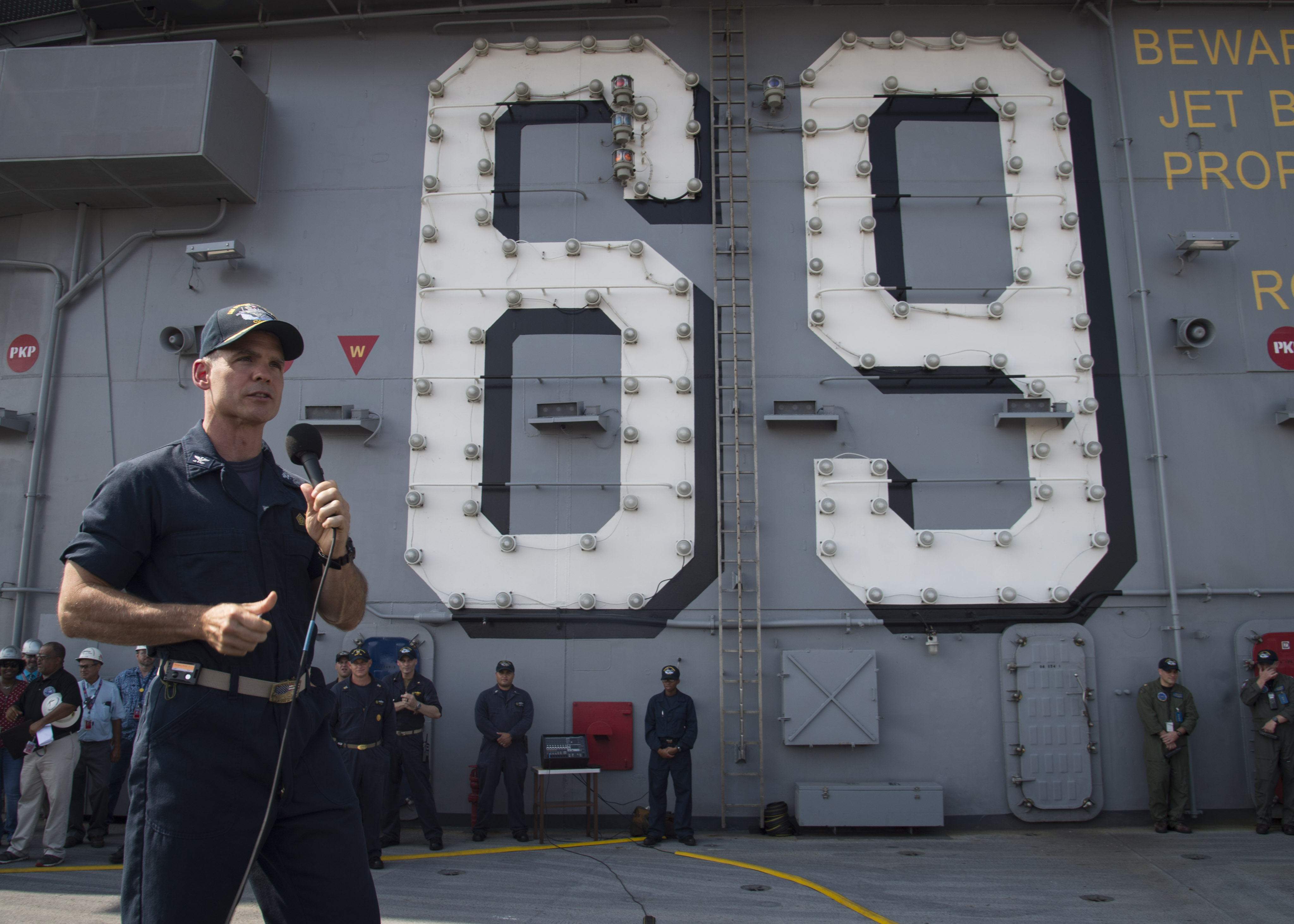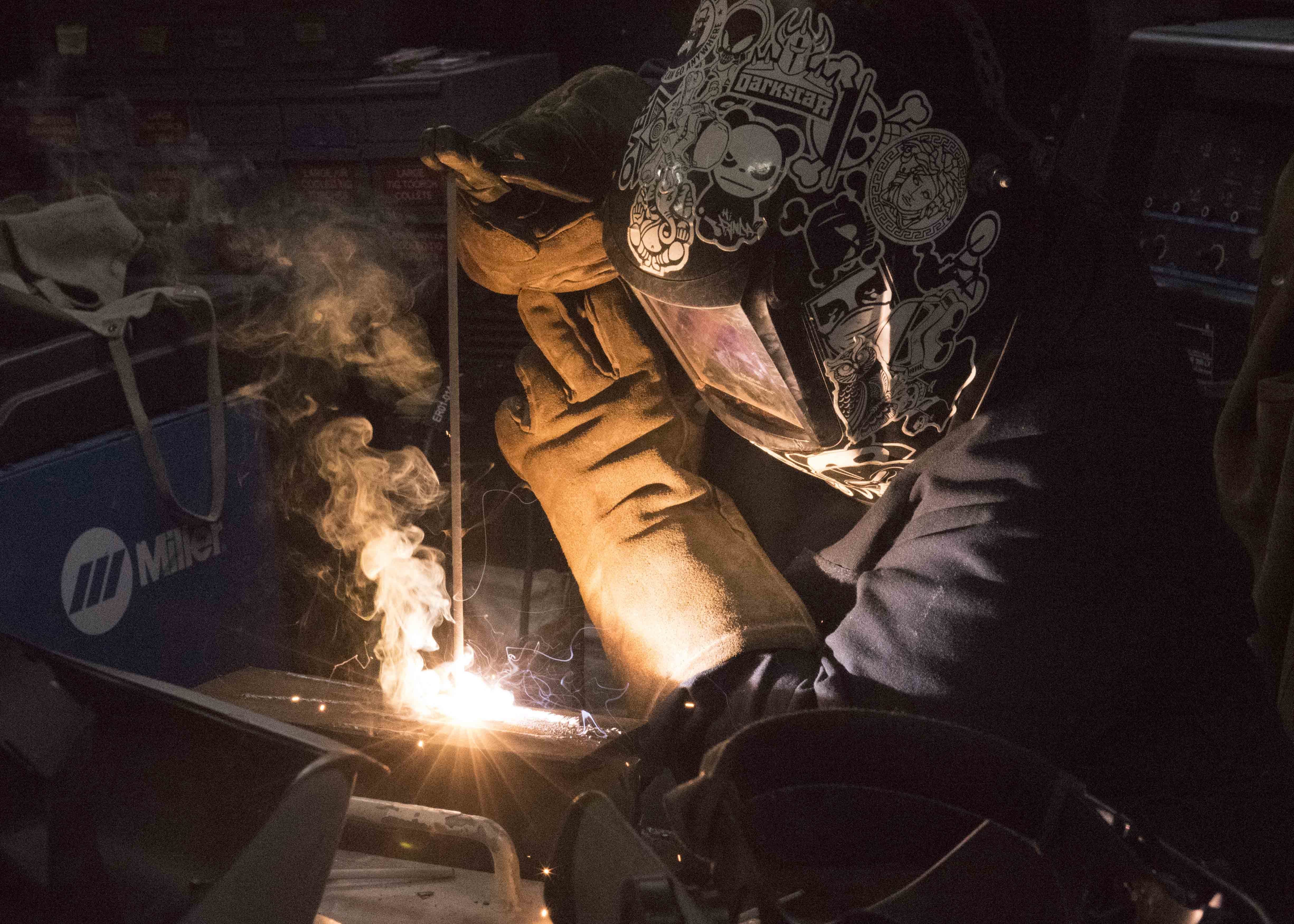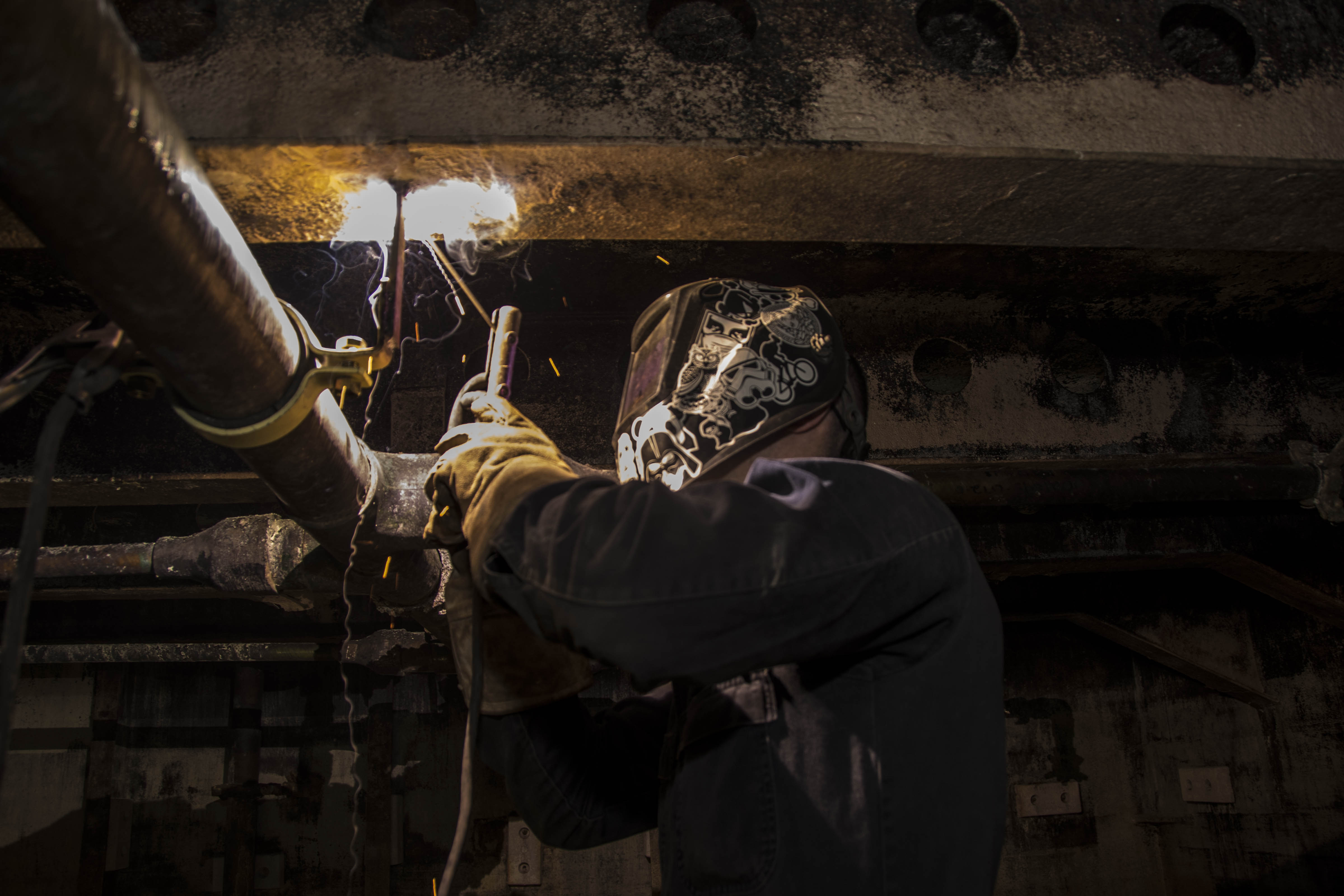
Capt. Kyle P. Higgins, commanding officer of the aircraft carrier USS Dwight D. Eisenhower (CVN 69), addresses the crew during an Aug. 18, 2018, all-hands call on the flight deck. Dwight D. Eisenhower is undergoing a planned incremental availability at Norfolk Naval Shipyard during the maintenance phase of the Optimized Fleet Response Plan. US Navy photo.
Aircraft carrier USS Dwight D. Eisenhower (CVN-69) will remain tied up in maintenance at Norfolk Naval Shipyard until early 2019, resulting in a maintenance availability about triple the expected six-month length.
Eisenhower is no stranger to overrun availabilities, after its last 14-month docked availability ran about 24 months. The carrier is the second oldest in the fleet at 41 years old – only outdone by lead ship USS Nimitz(CVN-68) at 43 years old – and has been among the hardest-run carriers in the fleet, contributing to its maintenance difficulties.
Navy officials would not elaborate on what specifically is causing the delay, but both the ship commanding officer and a Navy spokesman said the ship’s age is a factor.
In a Saturday message to the IKE community on Facebook, Commanding Officer Capt. Kyle Higgins wrote that “IKE is a 41-year-old dynamo. If you Google ‘IKE 2016 deployment’ you will see the incredible things we accomplished– some of you reading this were part of that deployment so you know the awesome power of Mighty IKE. But that came at a price. You can’t put a ship through so much without having equipment break and having to replace other parts. That’s true of any warship, even Mighty IKE.
“If we look at IKE as a classic car – pick your favorite, mine’s a ’58 Vette – and it has a lot of miles on it. So you take it to the shop and you know what needs to get done. But as happens on older cars, more things pop up. They all have to be taken care of so your car stays in the shop longer. You’re able to get some other work done on it at the same time – new upholstery, took care of some rusty areas – while the mechanics are working on the front end. Problem becomes the work takes even longer – there’s some rework, even more things are discovered that have to be addressed – and then you notice something else, and the list of repairs grows. This is the situation we’re in here on IKE: second- and third-order effects that we did not anticipate put us in a position where we need to requalify our Reactor Sailors for their watch stations in the plants.”

Hull Maintenance Technician Fireman Keriyate Lewis, from New Iberia, La., welds a metal brace aboard the aircraft carrier USS Dwight D. Eisenhower (CVN 69) on Aug. 14. 2018. Dwight D. Eisenhower is undergoing a Planned Incremental Availability (PIA) at Norfolk Naval Shipyard during the maintenance phase of the Optimized Fleet Response Plan (OFRP). US Navy photo.
Eisenhower entered its availability at Norfolk Naval Shipyard in August 2017 after a string of successful on-time maintenance periods at the yard and in the midst of some upgrades to pump and pipe shops and other key parts of the yard to address previous barriers to on-time ship deliveries. Still, despite the progress the yard had made, Eisenhower blew past its expected February 2018 delivery date and continues to experience new maintenance challenges as newly identified work pops up.
“The U.S. Navy is committed to sending to sea ships that are at a peak level of readiness in terms of manning, training and equipment. Anything less is unacceptable,” U.S. Naval Air Force Atlantic spokesman Cmdr. Dave Hecht told USNI News on Friday.
“In terms of maintenance of a nuclear-powered aircraft carrier, that is an extremely complex process, especially when it comes to vessels that have been in service for as long as USS Dwight D. Eisenhower. IKE’s maintenance is pressing forward with all expediency, and while delayed, we expect the ship and her crew to return to sea in the near future, fully capable to execute any mission handed to them.”
Higgins, while writing in his message that it would take several months to finish up the work on the ship and requalify some sailors, praised the crew for their hard work during the lengthy yard period. He also noted that the delay until early 2019 would provide some semblance of certainty for sailors and their families to make plans for the coming months.
With IKE stuck at the shipyard, USS George H.W. Bush has been marking time and awaiting its chance to get into the yard for maintenance. Bush has kept busy during the IKE delay, from hosting a French air wing to conduct carrier qualifications onboard the American ship to training in the Atlantic to hosting ceremonies like the standup of U.S. 2nd Fleet.
Still, the delay creates a headache for the East Coast carrier fleet in terms of operational availability: IKE is in the yard, Bush is waiting to get into the yard after finishing a seven-month deployment in August 2017, USS Abraham Lincoln (CVN-72) is working up with its air wing for the first time since completing its mid-life Refueling and Complex Overhaul last year but will relocate to the West Coast – though the Navy has not said if the move will happen before its next deployment or upon return – USS George Washington (CVN-73) is currently in its RCOH, and new carrier USS Gerald R. Ford (CVN-78) is conducting its post-shakedown availability at the Newport News Shipbuilding yard. That leaves just USS Harry S. Truman (CVN-75) on the East Coast, which is currently deployed to the North Atlantic. With IKE running so far behind schedule, it is unclear if Truman would have to conduct operational work during the “sustainment” phase of its Optimized Fleet Response Plan cycle – which includes maintenance, basic training, deployment and then sustainment, when the crew remains ready to surge naval presence around the world if called upon.

Hull Technician 2nd Class Luck Maguire welds a bracket in the aft collecting, holding and transfer tank aboard the aircraft carrier USS Dwight D. Eisenhower (CVN 69) in February 2018. US Navy photo.
IKE’s recent deployment history is an impressive one but likely contributes to the old ship being worn out and having repeated maintenance difficulties. The carrier deployed June 1, 2016, to the Middle East. By the time the carrier returned on Dec. 30, the carrier and its strike group had faced threats from Russian and Iranian naval forces and Iranian-backed forces in Yemen, conducted air strikes against Islamic State targets in Iraq and Syria, evacuated American personnel from an embassy in South Sudan, and performed maritime security operations in U.S. 5th and 6th Fleets.
Prior to its 24-month maintenance availability from 2013 to 2015, Eisenhower had deployed four times from 2008 to 2013 with just one maintenance availability, USNI News has reported, due to operational needs.
